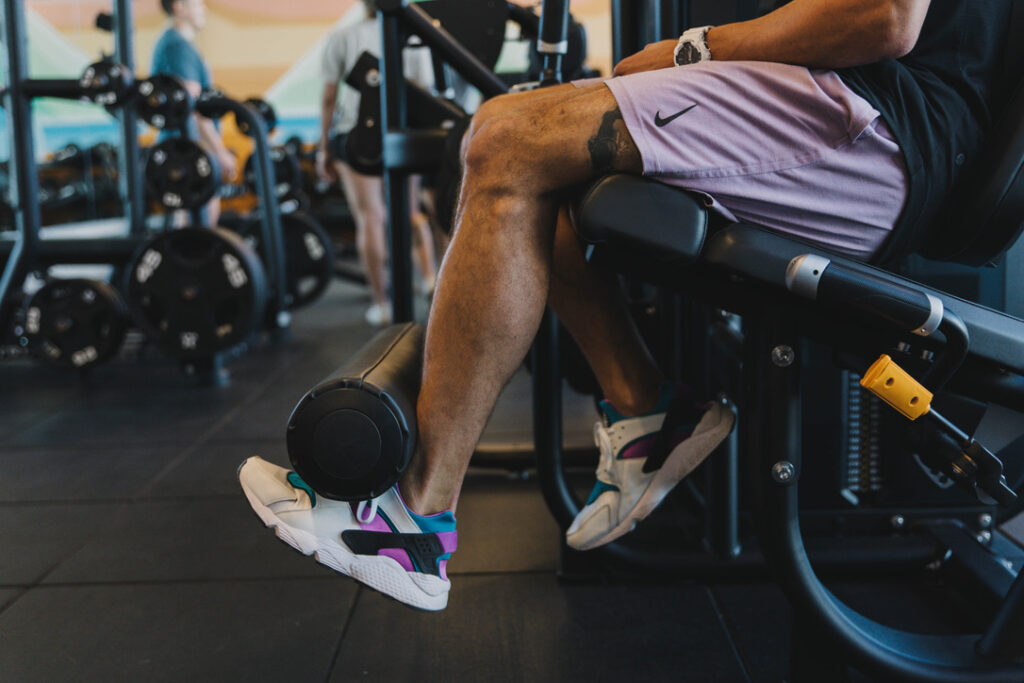“Open chain exercises provide the parts necessary to make the whole system of close chain exercises more efficient. One is neither superior, rather they are complimentary.”
ADam Loiacono
What You Will Learn
- The differences between open chain and closed chain exercises
- The application of both types of exercises in ACL rehabilitation.
- Specific criteria for ACL rehabilitation.
What are the Differences
To illustrate the difference between Open Chain (OC) and Closed Chain (CC) exercises, let’s imagine building a house. OC exercises can be likened to constructing the individual bricks separately and then assembling them into a wall. In this scenario, each brick represents an isolated muscle contraction, and the wall symbolizes the quadriceps muscle. OC exercises typically involve single-joint movements, such as leg extensions, where the knee joint moves independently. While OC exercises can target specific muscles, they isolate the quadriceps and may not fully replicate functional movements or adequately challenge the surrounding muscles and joints.
Now, let’s shift our analogy to CC exercises. Imagine building a wall using bricks that are interconnected and interdependent, forming a stable structure. CC exercises can be likened to integrating the bricks together, where each brick supports and interacts with the neighboring bricks. In this context, CC exercises involve multi-joint movements that engage the entire kinetic chain, such as squats or lunges. CC exercises create a more functional and realistic environment, as they simulate activities of daily living and sports-related movements that require coordination and stabilization of multiple muscles and joints. These exercises not only target the quadriceps but also engage the hamstrings, glutes, and core muscles, promoting overall strength and stability.
To further illustrate the benefits of CC exercises, consider the act of pushing a heavy object, such as a car that ran out of gas. In this scenario, pushing the car with OC exercises would involve isolating the action to just extending the arms. While this may work the muscles in the arms, it fails to engage the rest of the body. On the other hand, pushing the car with CC exercises would involve the entire body, with the legs providing a solid base of support, the core muscles stabilizing the trunk, and the arms coordinating the pushing motion. CC exercises replicate this integrated movement pattern, promoting functional strength and improving joint stability.
How to Incorporate Open Kinetic Chain & Closed Kinetic Chain Exercises

In ACL rehabilitation, both OC and CC exercises have their place. Initially, OC exercises will be beneficial for isolated muscle activation and quadriceps strength recovery. Quadriceps strength is critical for progressions within rehab, especially during running and jumping progressions. If quadriceps strength is poor, then we will see compensatory strategies such has hip dominant movements in jumping or early knee extension during running.
Immediately following surgery, there are precautions that have to be considered. This article highlights how various exercises produce strain on the ACL. When considering the use of OC during ACL rehab we will want to work within the safe ranges of 90-60 degrees of knee flexion as the ACL strain is zero or minimal within this range. A popular form of exercise are multi-angle isometrics. Another method I prefer is tempo training within safe ranges to help build volume and stimulate muscle growth.
CC exercises become crucial to restore overall strength, joint stability, and neuromuscular control. The reality is we are humans who produce complex movements and we ultimately have to challenge these complex movements. By engaging multiple muscles and joints simultaneously, CC exercises improve muscle coordination, joint proprioception, and functional performance.
Specific Criteria for OC & CC Rehab Progressions
In this article, I express my model of ABCDE on how to provide progressions during any rehab scenario. When progressing exercise to impact training, here are (3) standards I want to see before I begin to consider introductory running or jumping activities:
- Open Chain: Isokinetic knee extension relative strength minimum 80% peak torque per body weight
- Open Chain: Isokinetic knee extension Limb Symmetry Index 80% peak torque
- Closed Chain: Squat relative strength 150% bodyweight at a bar speed of 0.4-0.5 m/s (ideally on force plates to control for equal weight distribution right vs. left)
Both OC and CC are important. I do not believe one is superior to the other, but that both are necessary to address the part while addressing the system.
Summary
To summarize, OC exercises involve isolated movements similar to constructing individual bricks, whereas CC exercises integrate movements like building a stable wall. CC exercises simulate sport activities, engaging the entire kinetic chain, promoting functional strength, and enhancing joint stability. OC exercises are incredibly useful for isolated muscle activation and quadriceps strengthening. CC exercises are vital for overall quadriceps strength and rehabilitation success.



